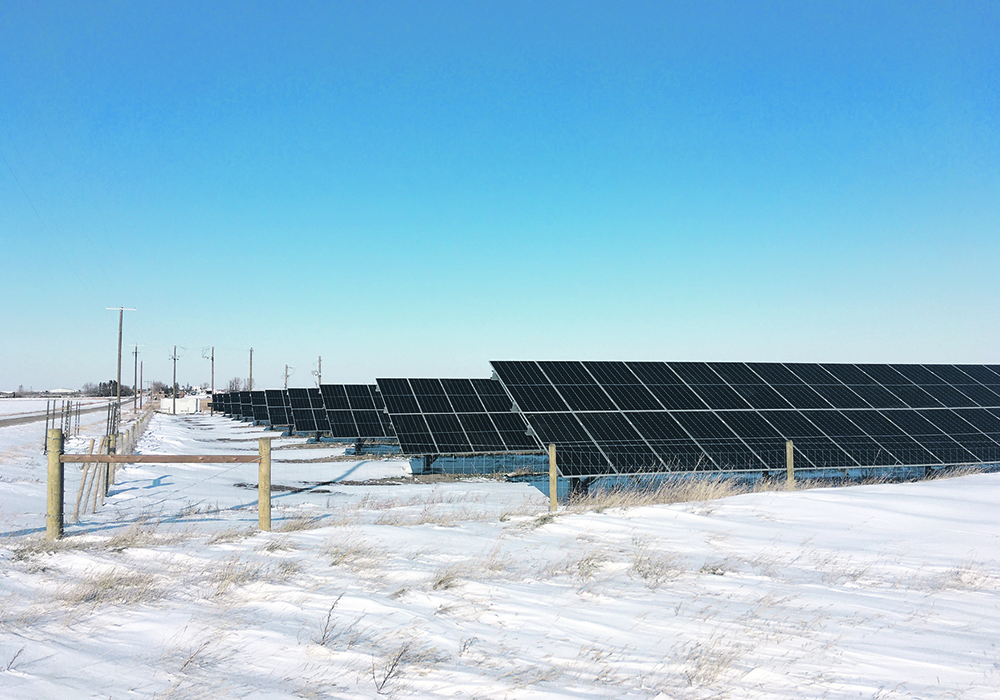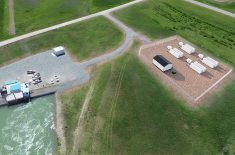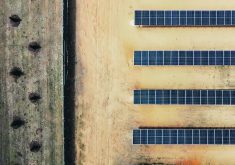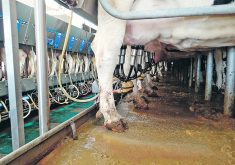Company’s pilot project will take advantage of existing infrastructure by erecting solar panels on inactive well sites
The cleanup of inactive oil and gas infrastructure in Alberta is daunting but a renewable energy company is looking to lighten the load while producing electricity through solar generation.
RenuWell opened its Municipal District of Taber project this month.
“We have over 170,000 inactive wells throughout Alberta — most of them in southern Alberta — in conventional oil and gas fields and that corresponds to about 340,000 acres of land that has been taken out of agriculture,” said Keith Hirsche, RenuWell president. “This is a big problem.”
These sites could take years to fully remediate to the point where they could again be used for agriculture. RenuWell wants to install solar panels on them.
Read Also

Russian wheat exports start to pick up the pace
Russia has had a slow start for its 2025-26 wheat export program, but the pace is starting to pick up and that is a bearish factor for prices.
The project with the MD of Taber, has the goal of developing two megawatts of solar generation to provide revenue for the rural municipality and for the Irrigation Canal Power Co-op.
Under provincial regulations, oil and gas companies are on the hook for municipal taxes and surface lease payments until such sites are fully remediated. But RenuWell’s projects would reduce those costs by up to 40 percent and use existing infrastructure, such as access roads once the well site is shut in.
“It’s well-documented that it takes a long time for the land to recover to its full productive capacity, even when it has a reclamation certificate,” said Hirsche.
The company plans to energize its solar project at two sites in the MD of Taber later this year with interest coming from across southern Alberta regarding installing more in the region.
“All these municipalities are very excited and expressed positive comments about the RenuWell concept because basically, we’re not taking more land from agriculture,” said Hirsche. “We’re basically scattering on two-to-four-acre sites over a bigger area.”
Using half the inactive well sites within MD of Taber could produce the same energy output as the 465 megawatt Travers Solar Project, which took more than 3,300 acres of rangeland in nearby Vulcan County, said Hirsche.
“As well, you wouldn’t have to build any new roads, any powerlines because we could use existing infrastructure that was put in place for the oil and gas sector,” he said. “Landowners are favourable because we choose the least quality agricultural land.”
With a lot of well sites located on corners of irrigated fields, there is potential to tie in the solar generation to power pivots during summer when power production and demand are at their highest.
During the cooler months, power produced could potentially be put back onto the provincial grid.
There is also the potential of generating local power for local needs, which could offset rising distribution costs associated with electricity production in the province, said Hirsche.
However, provincial regulations tend to favour larger projects by the biggest players in electricity production in Alberta, Hirsche said.
The potential is huge if such regulatory burdens can be overcome, said Hirsche.
“Not every site is feasible, we’re looking for ones close to powerlines, close to roads, close to where there is big electricity consumption so it’s not pushing electricity onto the transmission grid,” he said, adding about 10 percent of inactive sites meet those criteria. “Ten percent is 34,000 acres and that comes out to be about 6,500 megawatts of solar generation capacity.”
That level of energy production on such a scale would offset costs associated with reclamation and generate inexpensive and clean power, while also providing a revenue source, said Hirsche.
The project has also seen the retraining of 15 oil and gas workers through collaboration with the Medicine Hat College and industry advocacy group, Iron and Earth.
















